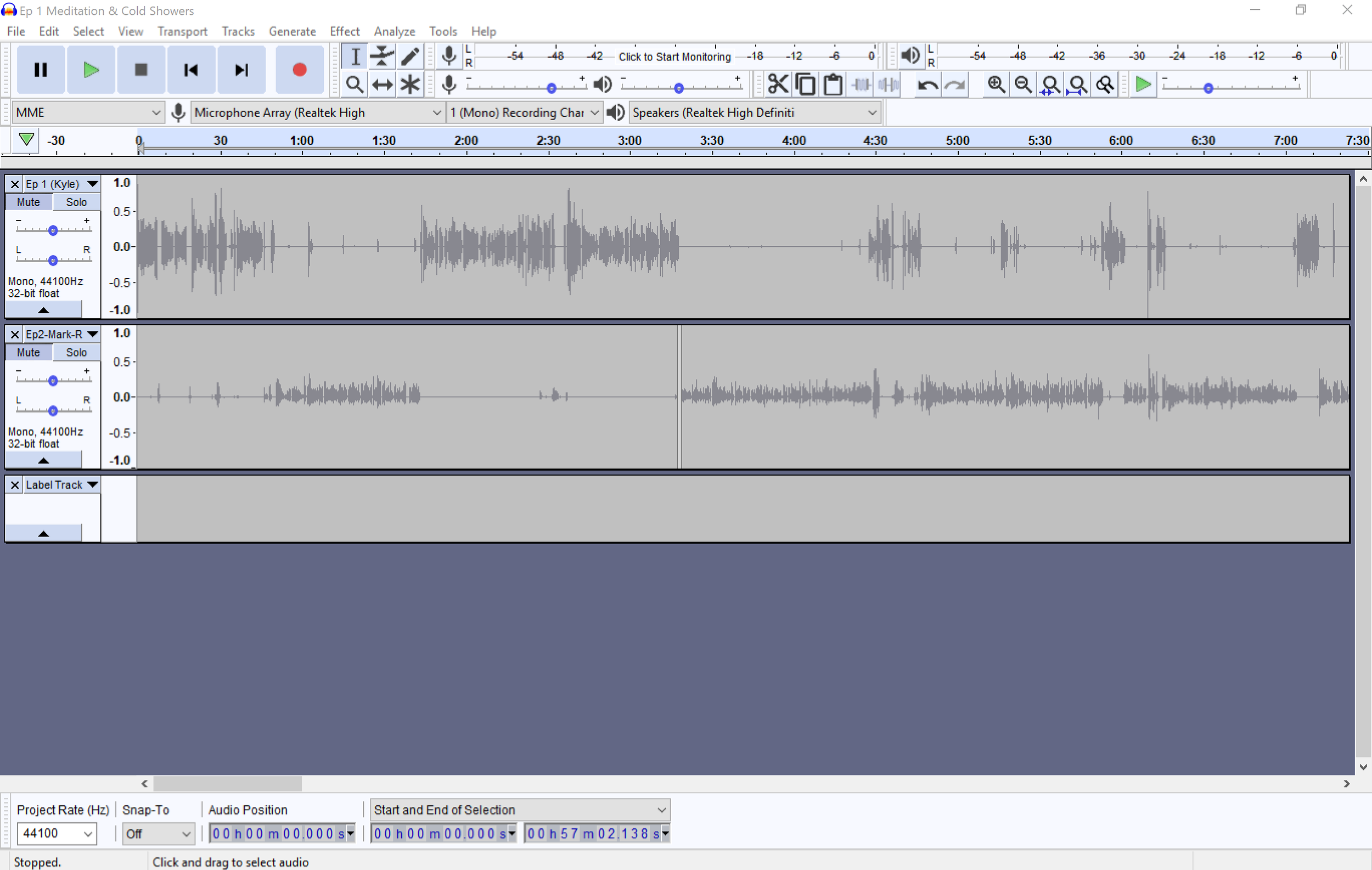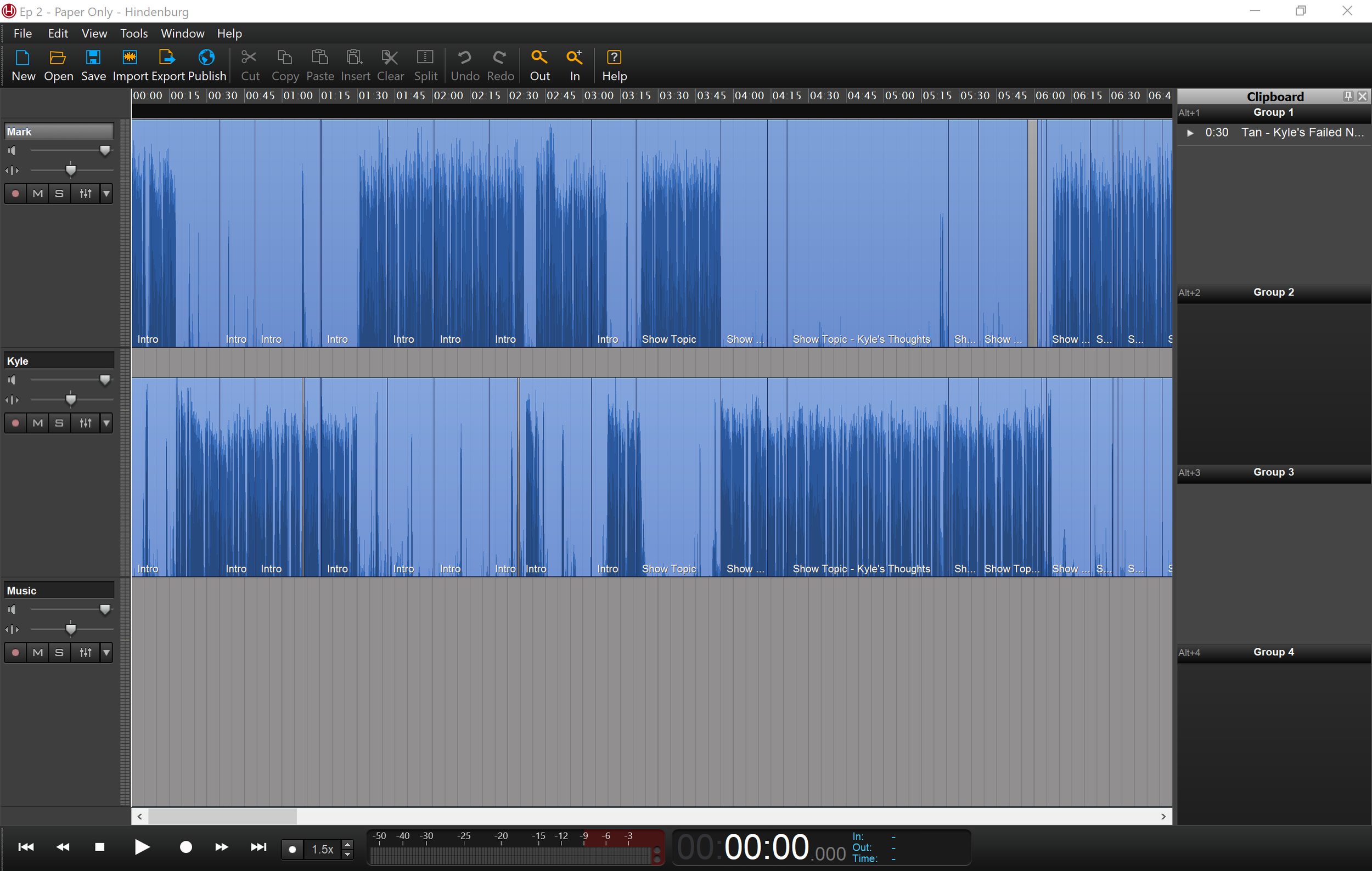I’m gong to be honest with you, when it comes to podcasting (and most things in general) I like to cut corners on my expenses. As mentioned in my previous Productive Podcaster post, I spent hours of my time working on subpar graphics for my old show just to save on money. Once I realized that my time was more than my money, I decided it was time to delegate that work to a friend of mine who’s a professional graphic designer. This corner-cutting behavior is true with my editing tools as well, until this year when I switched from Audacity to Hindenburg.
Audacity is the de facto editing and recording program for amateur and new podcasters, if you’re on Windows. It is a free, open source audio editing program with a great community built around it. However the thing with free is that it means what you save in money, you make up in time. Audcacit’s UI for example is very menu based and has limited keyboard shortcuts.

It’s not a bad system, and the UI has improved significantly since I first started using it. Audacity has all the features you need to start podcasting: multi-track editing, label tracks for keeping tabs on every section, hundreds of custom plug-ins for features you’re missing and so on. But it also lacks many other important features you will have to get around by installing plugins and using other programs, such as the most important one: a native MP3 export (you will have to install LAME in order to export to MP3), and a built in auto leveling function (I used Levelator for leveling all my tracks, it’s great but no longer supported). Finally Audacity also lacks in fun optional features as well as exporting podcast chapters. There are solutions to all these issues with Audacity, but if you’re willing to invest a $100 to make your podcast production process smoother and much more enjoyable, I would recommend Hindenburg Journalist.
Hindenburg Journalist is an audio editing program mostly geared towards audio journalist, which means you will be getting everything you need pre-installed. There are two tiers, the Journalist, and the Journalist Pro, but when it comes for home production the Journalist edition has everything you need, for starters Journalist has a native MP3 export function, and auto leveling, not to mention the UI is just great looking (UI aesthetics are very important for me, if you haven’t noticed).

There are so useful many features Hindenburg Journalist has that Audacity lacks that make it worth it, from:
-
Labeling each track individually, instead of having a separate label track in Audactiy you can split each track and label each section.
-
Muting audio, instead of deleting it. In Audacity whenever you mute a section it automatically replaces it with a silent track, making that old audio irrecoverable. In Hindenburg you can simply select your audio then hitting Ctrl+M, which will tell the program to not play that portion. The effects can be undone at any time.
-
Non-destructive editing. In audacity whenever you delete a portion of a track it is gone forever, not in Hindenburg.
-
Audio chapters. This is a feature I haven’t used just yet, but I plan to once Mark and I begin rolling out The Productivity Lab. Chapters make it super simple for your listeners to know what topic you’re covering and makes it simple to navigate between each one so they can easily relisten to what you discussed.
-
Syncing tracks. The ability to sync tracks is so important that I had no idea how much I needed it until I swapped to Hindenburg. With synced tracks it makes it way more easier to delete and rearrange portions of a track since you know that other tracks synced to it will alter with it. This was an issue with multi-track editing in Audacity that would cost me minutes of time whenever I forgot delete a portion of another to keep it lined up, or moving the tracks around to line up with the music.
Just having the peace of mind that everything I need is within one program has made the editing of my new show so much more relaxing. No more juggling between programs. And if I’m every curious about how to use or find a feature Hindenburg has a very helpful and searchable help section on their website.
Since I’ve only used Hindenburg for editing two episodes this post only covers my first impressions. Audacity is a terrific starting program, but if you have $100 to spend I would recommend Hindenburg any day over Audacity.
